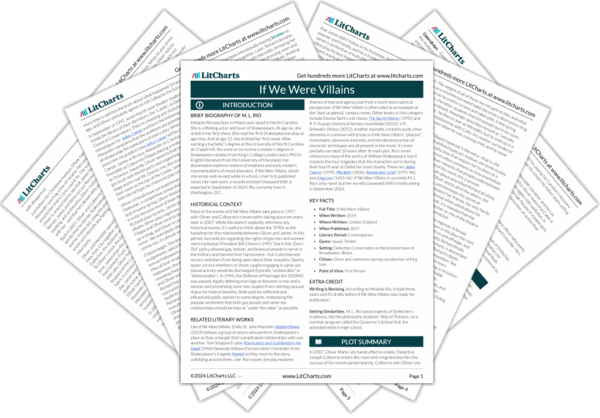The sparrow is an ever-evolving symbol, something that Oliver keeps coming back to throughout the story’s course. Overall, however, it represents the inevitability of death. Oliver pulls the image from Hamlet’s lines, just before he enters the duel with Laertes that will kill him: “There is special providence in the fall of a sparrow. If it be not to come, it will be now. If it be not now, yet it will come. […] Let be.” “It” in these lines is Hamlet’s death, to which he’s become resigned. In the play, Hamlet tells his friend Horatio that even if he doesn’t die in this fight, he’ll die sooner or later by another cause. Oliver follows a similar train of thought the first time he considers the sparrow, as he weighs whether to let Richard die. Thinking of Richard as the fallen sparrow, he concludes that the best course is to let Richard’s “natural” death continue (of course, he doesn’t yet know that Richard didn’t just hit his head and fall by chance). Later, Oliver starts to think of the sparrow in terms of fragility, becoming worried that James is becoming the fragile sparrow that Richard was as he lay dying in the lake. Even though Oliver tries to take action to prevent James’s literal or figurative death by taking the blame for Richard’s murder, the fall of the sparrow is inevitable—James dies in 2003. The ending of the novel, however, adds another layer of ambiguity into the mix, since it suggests that James may in fact be alive.








